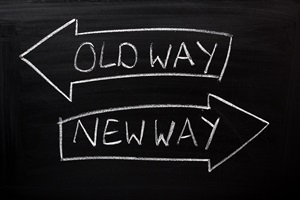ATD Blog
Changing D&I Through Change Management
Tue Aug 09 2016

Despite compelling research from McKinsey, which found that companies with gender diversity are 15 percent more likely to outperform less diverse companies, diversity and inclusion (D&I) progress in American companies has been painfully slow.
Consider these stats:
Although women comprise 45 percent of the American workforce, they represent less than 5 percent of CEOs and less than 20 percent of board members.
Corporate boards are still 70 to 75 percent white males.
Multiple factors contribute to the current state of inequity in the workplace. Hidden bias can affect even seemingly open-minded employees. Additionally, organizational constraints such as underfunding of the D&I function, silos, and lack of rewards or recognition for D&I can impede progress. Many organizations view D&I as a series of one-off initiatives and not part of an overall change management strategy.
**
Change Management: A Systematic Approach
**Because the challenges facing D&I progress are multifaceted, so too will be the required solutions. A methodology should frame D&I efforts using the lens of change management. Here are three of the most widely used models for organizational change:
Kotter
This model is an eight-step process:
Establish a sense of urgency.
Create a guiding coalition.
Develop a change vision.
Communicate the vision for buy-in.
Empower employees to take broad action.
Generate short-term wins.
Never let up.
Incorporate changes into the culture.
ADKAR
ADKAR is an acronym that “represents the five milestones an individual must achieve for change to be successful”: awareness, desire, knowledge, ability, and reinforcement.
The Accelerating Change & Transformation (ACT) Model
Developed by Emergent, this model has been used at both Fortune 500 and midmarket companies. Steps include:
Plan the change.
Create urgency
Lead the change.
Engage the people.
Align systems.
Sustain the change.
Change management processes offer D&I a plan for implementing change; looking at factors including communication, training, rewards, and recognition; and identifying change agents and sponsors. The change management process should also assess where people are with respect to D&I in various levels, functions, and locations. Are they:
active change agents, willing and able to get involved
active supporters
·on the fence and want to learn more
active resisters
saboteurs?
It is necessary to have a full picture of the current state to plan the actions required to move to the desired state. D&I needs change management methodology that incorporates systems, processes, people, and a long-term investment for sustainable results.
How has your organization used change management approaches to drive D&I progress?
